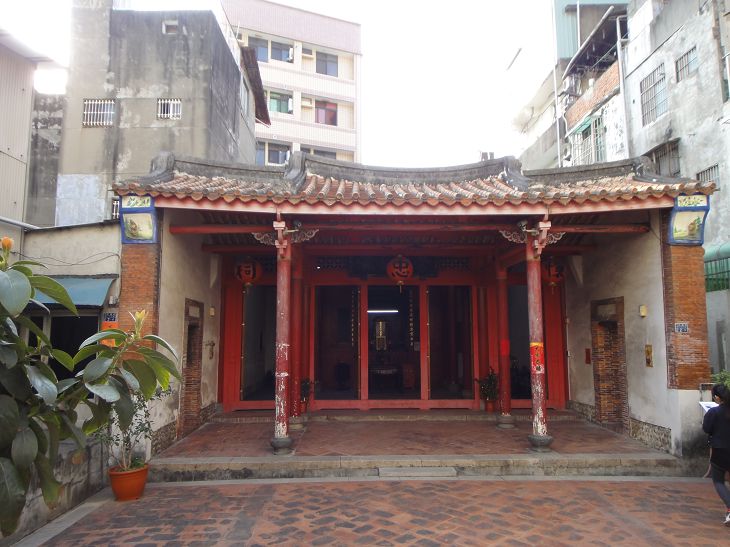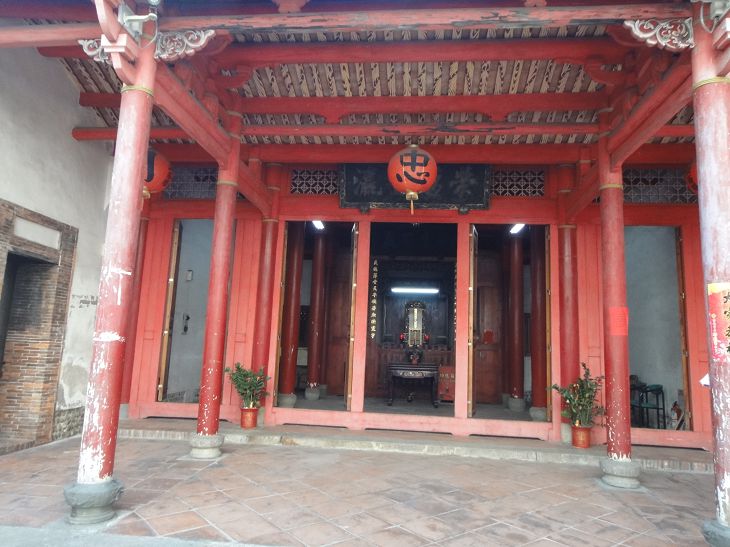This shrine was built in the Qing Dynasty Yongzheng Period. In spring of Yongzheng 10 Qing Dynasty (1732), the Pingpu Dajiaxi Tribe rose against the Qing Government and attacked the capital city of Changhua with armed forces. The commander of Taiwan Lu Jui-Lin succumbed to the rebels. At the time, the minister of Danshui Chang Hung-Chang was attacked by the Asu tribe’s arrows while on a tour to survey the settlements. Settlements neighboring the Asu Tribes were mostly Cantonese migrants. They heard that the government official was in danger, so they gathered a gang to fight against the Pingpu tribes. Officer Chang Hung-Chang escaped safely, but the uprising was not suppressed until four months later. Eighteen settlers were killed in this incident, namely Huang Shih-Yuan, Huang Chan-Chi, Chen Shih-Ying, Chen Shih-Liang, Tang Pang-Lien, Tang Shih-Lin, Li Po-Shou, Li Jen-Shu, Lai Te-Wang, Liu Chih-Jui, Wu Pan-Yun, Hsieh Shih-Te, Chiang Yun-Te, Liao Shih-Shang, Lu Chun-Te, Chang Chi-Ning, Chou Chao-Te, and Lin Tung-Po. The neighbors pitied their sacrifice and buried their remains outside of the West Gate. A stone was erected for this mass tomb, which was inscribed as the Tomb of Eighteen Martyrs. The Qing Government ordered local officials to acquire the land at the current site, build a shrine, and conduct sacrificial rituals in the spring and autumn to commemorate the spirits of the martyrs. The shrine was rebuilt in Daoguang 13 Qing Dynasty and renovated in 1953.

Commemorates militiamen who were killed in action: Shih-Yuan Huang, Chan-chi Huang, Shih-ying Chen, Shih-Liang Chen, Pang-Lien Tang, Shih-Lin Tang, Po-Shou Li, Jen-Shu Li, Te-Wang Lai, Chih-Jui Liu, Pan-Yun Wu, Shih-Te Hsieh, Yun-Te Chiang, Shih-Shang Liao, Chun-Te Lu, Chi-Ning Chang, Chao-Te Chou and Tung-Po Lin etc. The locals took pity on them following their death, buried them outside the West Gate of the old city, and created the Tomb of the 18 Militiamen. Subsequently, an official from the Qing Dynasty purchased a plot of land at the current addresses to construct a shrine, and rituals are held in spring and fall to console the souls of the loyal spirits. It was later reconstructed in year 13 of Daoguang Period (1833) and again in 1953.

Cantonese Militia Shrine



